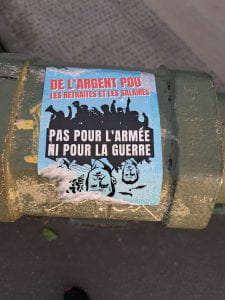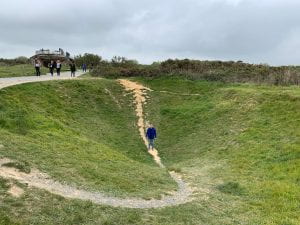Kids. Of the twenty thousand German soldiers buried at La Cambe German War Cemetery in Normandy, France, many were kids. Younger than me, living in a much crazier world than me, and influenced by evils incomprehensible to me. Why was the Nazi army so dependent on kids in the final stretch of the war, and should I mourn for them?
Many of the young boys who had been interacting with the Hitler Youth, the systematic effort to expose children to the ideologies and policies of the Third Reich, were of age to fight by the final years of the war. Kids from the Hitler Youth comprised most of the 12th SS Panzer Division, and they quickly unleashed a fierce rage upon their opponents, leaving civilians raped, towns pillaged, and prisoners massacred.
While I firmly believe many of these young soldiers were fervent Nazis themselves, I also recognize that some children, even those who spent almost a decade in the Hitler Youth, were simply in the wrong place at the wrong time. It was rarely a child’s choice if they joined the Hitler Youth – their parents made that decision – and there was a whirlwind of influences that parents dealt with when they made such a choice. Given this nuance, how can I blame a child for his response to the surrounding environment?
As I moved through the cemetery I thought of these circumstances and attempted to pull pieces of humanity out of the soldiers who lay there. But I questioned why I was trying so hard to find humanity in folks that – as far as I am concerned – refused to see any humanity in me. I was silent, wiping tears from my eyes as I read the graves of young men, unsure if I should mourn the loss of life when their demise might be the reason why I am alive. Ultimately, I couldn’t mourn the death of the soldiers in the German cemetery, not even the kids. A piece of me holds each of them responsible for their own actions regardless of the wild environment they grew up in. That same internal voice tells me that I would not be here if they were, even the sweet, young boys filled with amazing potential before being brainwashed by Nazi rage. I feel like my life is on the line when I wonder about theirs, and every time I must pick mine.

By comparison, the serenity of the Normandy American Cemetery conveyed reverence, respect, and admiration. I felt as if the sacrifice of these American soldiers guaranteed my life. The clean, white stone at the American cemetery created a serene feeling compared to the dark gray stone that covered the German cemetery, a stormy and gloomy look. Both cemeteries invoked emotion and gratitude, ultimately reminding me of those that came before me and how their deaths, unfortunate or not, gives me the opportunity to live.































